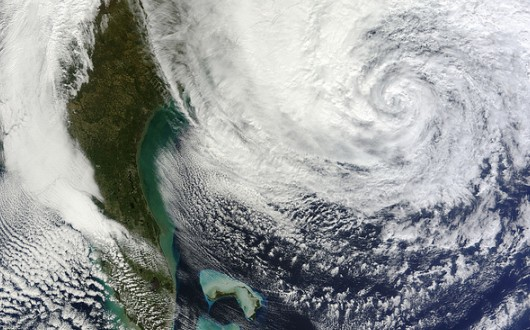travel.aol.co.uk
Massive solar storms could have ‘devastating effects’ on human technology and cause a global Hurricane Katrina-style disaster when they hit a peak in two years’ time, leading experts have said.
The storms are a growing threat to worldwide infrastructures like satellite communications, navigation systems, and electrical transmission equipment, says Kathryn Sullivan, US National Oceanic and Atmospheric Administration assistant secretary.
Solar storms are caused by massive explosions on the sun, and release particles that can destroy computer circuits.
A massive eruption of the sun would send waves of radiation and charged particles to Earth, damaging the satellite systems used for synchronising computers, airline navigation and phone networks.
If the storm is powerful enough it could even crash stock markets and cause power cuts that last weeks or months, experts told the American Association for the Advancement of Science.
The explosions release waves of X rays and ultraviolet radiation that smash into the Earth’s atmosphere within minutes, disrupting radio signals and damaging the electronics of satellites.
They are followed 10 to 20 minutes later by a burst of energetic particles that cause even more havoc with satellites – and then 15 to 30 hours later by supercharged plasma, which collides with Earth’s magnetic field.
According to the Daily Mail, Dr Sullivan, a former NASA astronaut, told a UN weather conference in Geneva that ‘it is not a question of if, but really a matter of when a major solar event could hit our planet’.
And she’s not the only scientist warning of the threats of solar storms.
In February, astronomers warned that we are more vulnerable now than ever before – and that the planet should prepare for a global Hurricane Katrina-style disaster.
The chances of a disruption from space are getting stronger because the sun is entering the most active period of its 11 to 12-year natural cycle.
The supercharged plasma create the aurora – or Northern Lights – and can induce electrical currents in power lines and cables.
The last solar maximum occurred in 2001.
Related articles
Was it the Supermoon? 100 unexploded WWII bombs wash up on British beach
Could next week’s Supermoon cause chaos around the globe?
Near miss! Asteroid as strong as 15 atomic bombs whizzes past Earth


'Solar storms ‘to wreak havoc around the world’' has no comments
Be the first to comment this post!